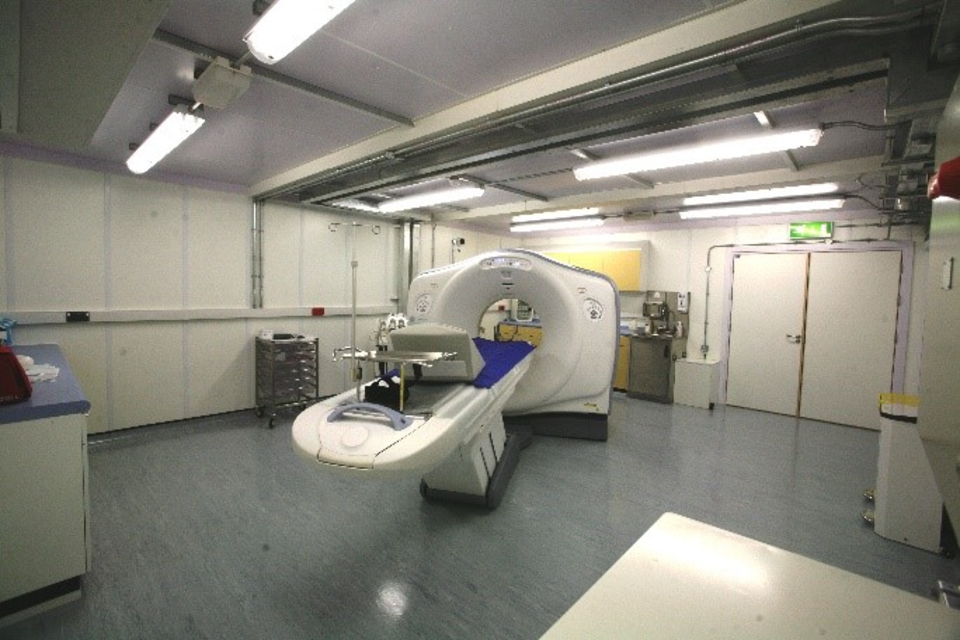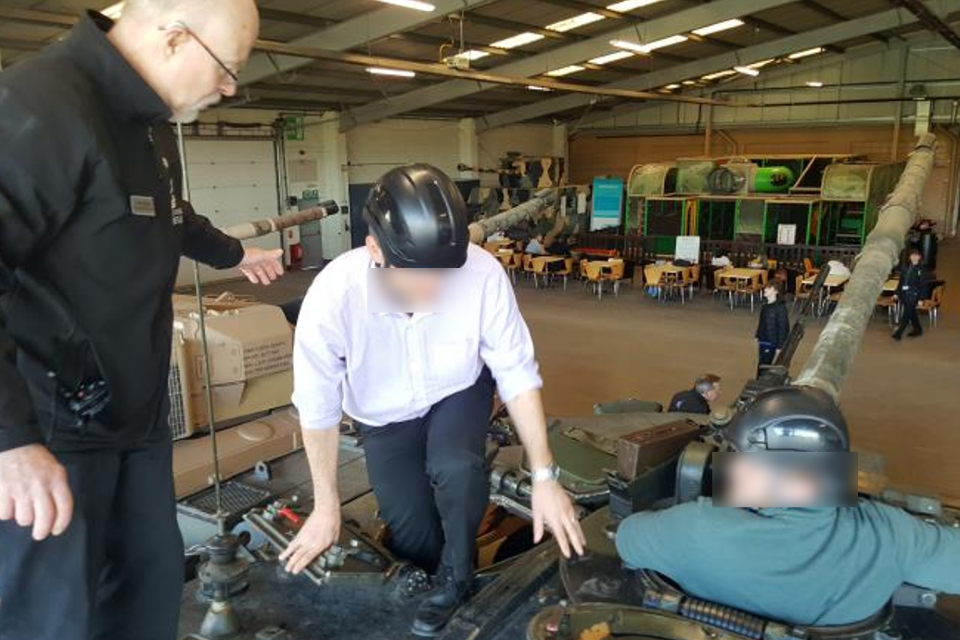Dstl careers: Steve, physicist and group leader
Steve is one of many physicists delivering life-saving science and key innovations at the Defence Science and Technology Laboratory.

One of the twin CT scanner suites in Camp Bastion
The Defence Science and Technology Laboratory (Dstl) is a world-leading defence and security organisation. It is also one of the UK’s top STEM employers, which offers unrivalled opportunities in a vast number of disciplines and areas.
Steve is one of many physicists working alongside thousands of experts delivering often live-saving science for the armed forces as well as providing key innovations and protective measures to support UK security. Steve’s scientific career began at the NHS after graduating with a BSc in Physics and Medical Physics.
To be honest, I wasn’t really ready to join the world of work, so I returned full time to university and undertook a PhD at the University of Sheffield looking at experimental validation of computational fluid dynamics models that predict growth of arterial stenotic occlusions – blockages in your arteries.
I received my doctorate in 2005, and immediately took on a role as a research assistant in the University of Leicester, researching the comparative accuracy of measuring blood pressure directly in the aorta versus measurement at the fingertip.
Steve began his career within CBR (Chemical, Biological and Radiological) Division at Dstl Alverstoke, which led him into a role specialising in medical physics.
As a health physicist and medical physics expert (MPE) for the Dstl Radiation Protection Advisory (RPA) body, he also became the Project Technical Authority to the Joint Medical Command project; in this role he advised on patient safety of a project looking at medical imagery with computerised tomography (CT) scanners, which use X-rays and a computer generated images of the inside of the body.
It is these projects which saw Steve travel to a number of non-operational and operational areas with the British Armed Forces, including the Falkland Islands, Gibraltar, Naples and Afghanistan.

One of the twin CT scanner suites in Camp Bastion
Supporting the installation of vital CT scanners in Camp Bastion during the Afghanistan conflict was a career highlight. Being able to support operations with my medical and scientific experience during this difficult time was very challenging, but ultimately rewarding.
My support initially comprised remotely advising and supporting the construction team, followed by a visit to the facility to undertake radiation safety and imaging performance testing.
Travelling to and from Afghanistan was an experience, too; we sat at Kandahar airport (outside temp 46°C) in a non-air conditioned plane, in full body armour and helmet for the best part of an hour – I was so hot even my knee caps were sweating.
However, it was all worth it, our work was recognised on national TV, and whilst I personally was a very small cog in a big machine, it was hugely satisfying – and most importantly our work absolutely saved countless lives.
The career opportunities within Dstl means employees have the flexibility to work in other areas beyond their initial role. There are also opportunities to develop leadership skills, something Steve has taken advantage of.
I have always enjoyed leading and developing people, a passion that I developed during my time as a research assistant. As a result, I chose to explore a management route, and became a Team Leader within CBR Division, leading the team responsible for undertaking radiological surveys on behalf of the MOD.
Adding the leadership string to his bow, Steve was able to transfer to others areas of work, moving from CBR work to a team leader role in Platform Systems Division (PLSD). ‘Platforms’, as the Division is known, looks at the science and engineering of military hardware, which is not Steve’s academic background.
Being a physicist gave me the flexibility to work in other areas. Understanding physics means that you can understand the very basis of why things happen, allowing you to communicate effectively and meaningfully with a wide range of colleagues, especially engineers who are, after, practically applying physics. I don’t profess to be their equal in their field, but when they tell me about something, I believe that the synergies between physics and engineering lets me understand them quite rapidly.
It has been quite a journey for Steve, who has now reached the role of Group Leader for the Land Platforms Group, illustrating that promotion opportunities are available to all who come and work at Dstl.

Steve daintily exits a tank at The Tank Museum during the Land Platforms Group 2019 away day.
I enjoy everything I do at Dstl and I would ask anyone joining us to explore the many areas of work. We do loads of cool stuff, so get involved; you may love what you do now, but I promise you there will be a hundred other things that you will enjoy just as much.
Explore and apply for current opportunities at Dstl